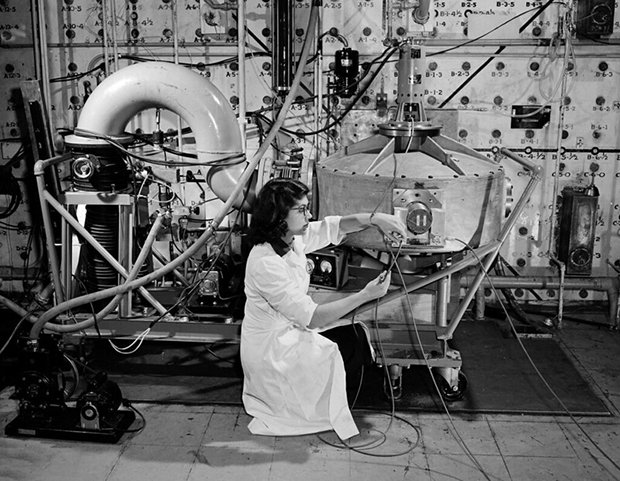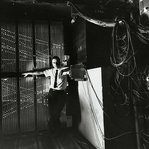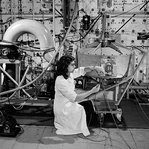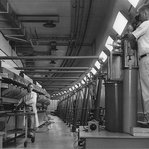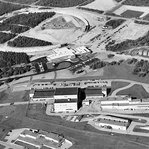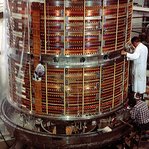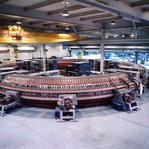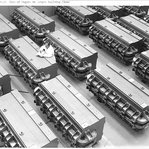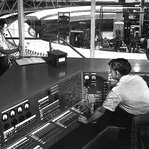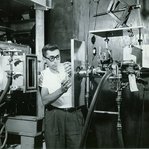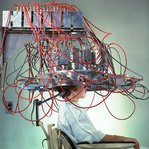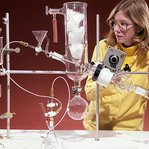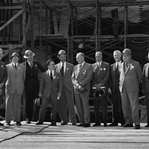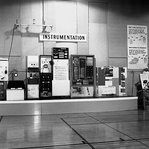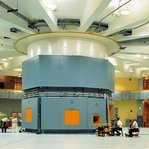In 1947, Brookhaven National Lab (BNL) was established on the former site of the U.S. Army’s Camp Upton.
To see some great old pics from when the site served as a U.S. Army base during both World Wars click here.
Since then, the lab has produced cutting-edge research and discoveries. Among the accolades scientists at the lab have received are seven Nobel Prizes.
Click here to read Crazy Facts About Brookhaven National Lab to learn more.
Below we present some great old pics from the history of BNL:
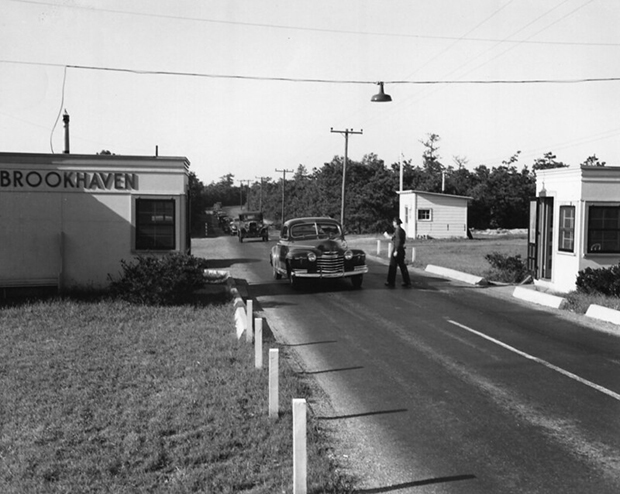
Photo: Brookhaven National Lab
The original main gate entrance to Brookhaven National Laboratory, circa the late 1940s.
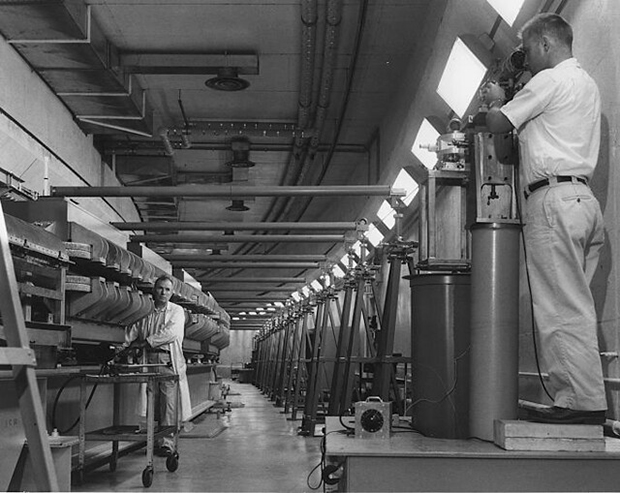
Photo: Brookhaven National Lab
Magnets for Brookhaven's Alternating Gradient Synchrotron (AGS) are precisely aligned in this 1959 photo.
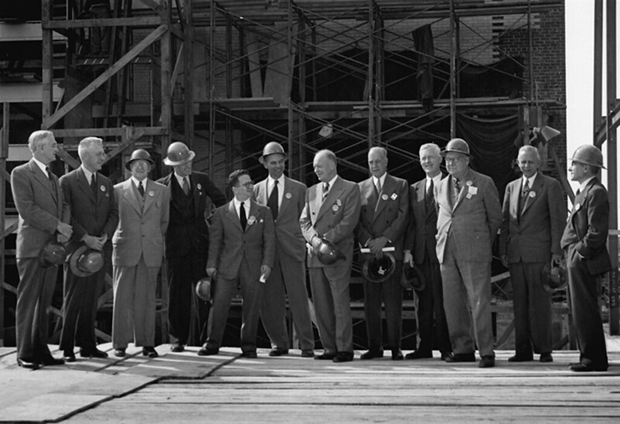
Photo: Brookhaven National Lab
Dwight D. Eisenhower visits the construction site of the Brookhaven Graphite Research Reactor (BGRR) in 1948. At that time, Eisenhower was the president of Columbia University.
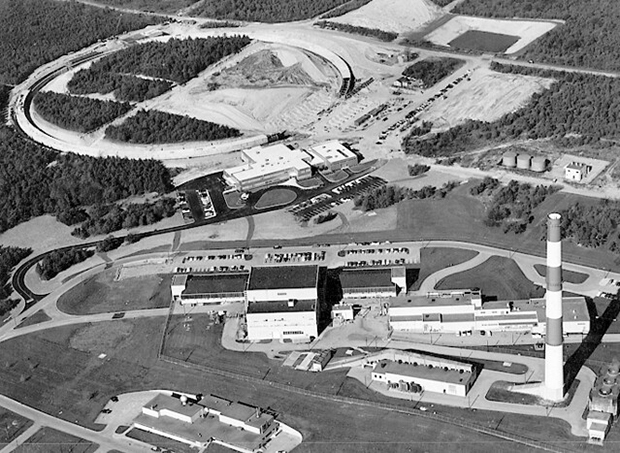
Photo: Brookhaven National Lab
Aerial view of the Brookhaven Graphite Research Reactor and Alternating Gradient Synchrotron.
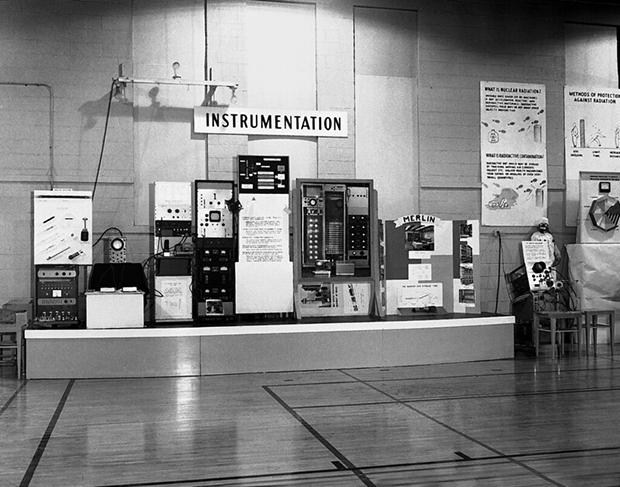
Photo: Brookhaven National Lab
1958- Visitors day exhibit of the "Tennis for Two" a forerunner to today's modern video games. The simulated game was played on a converted oscilloscope.
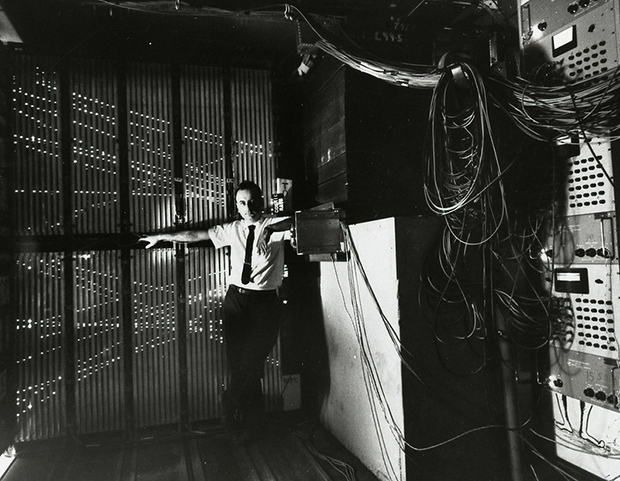
Photo: Brookhaven National Lab
Nobel Laureate Melvin Schwartz. In 1962, Schwartz, with Leon Lederman and Jack Steinberger, at the time all of Columbia University, discovered the muon neutrino at the Alternating Gradient Synchrotron (AGS), the then brand-new accelerator at the U.S. Department of Energy's Brookhaven National Laboratory. The three researchers shared the 1988 Nobel Prize for this discovery.
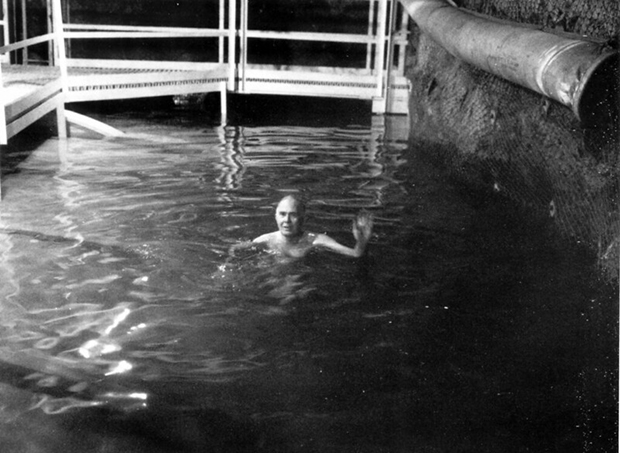
Photo: Brookhaven National Lab
Nobel Laureate Raymond Davis. Davis, a chemist, won the 2002 Nobel Prize in Physics for detecting solar neutrinos, ghostlike particles produced in the nuclear reactions that power the sun. He shared the prize with Masatoshi Koshiba of Japan, and Riccardo Giacconi of the U.S.
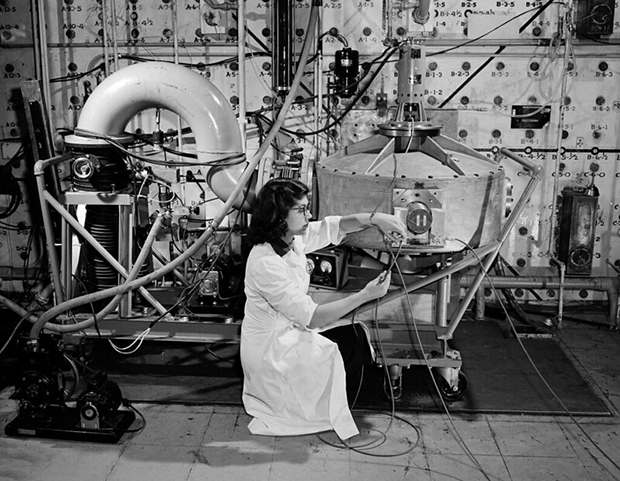
Photo: Brookhaven National Lab
Researcher working with a piece of equipment known as the "fast neutron chopper" at Brookhaven's Graphite Research Reactor (BGRR) in the 1950s. The BGRR operated from 1950 until 1968.
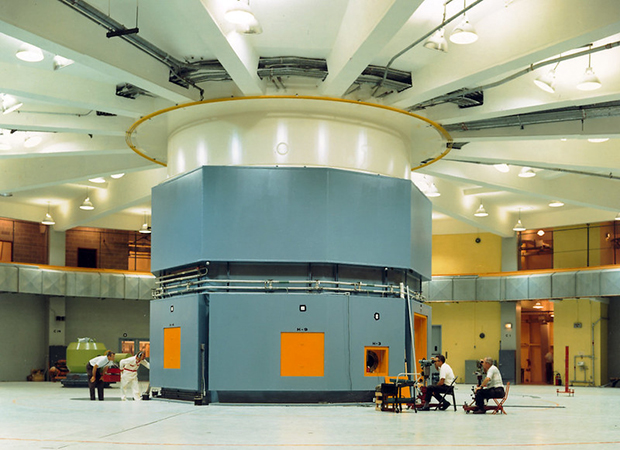
Photo: Brookhaven National Lab
High Flux Beam Reactor. Experimental floor of the High Flux Beam Reactor (HFBR) circa 1964, prior to the installation of research equipment. The mission of the HFBR was to provide a source of neutrons for multidisciplinary scientific research in materials science, chemistry, biology, and physics. The HFBR achieved criticality on October 31, 1965. It was permanently closed in 1999.
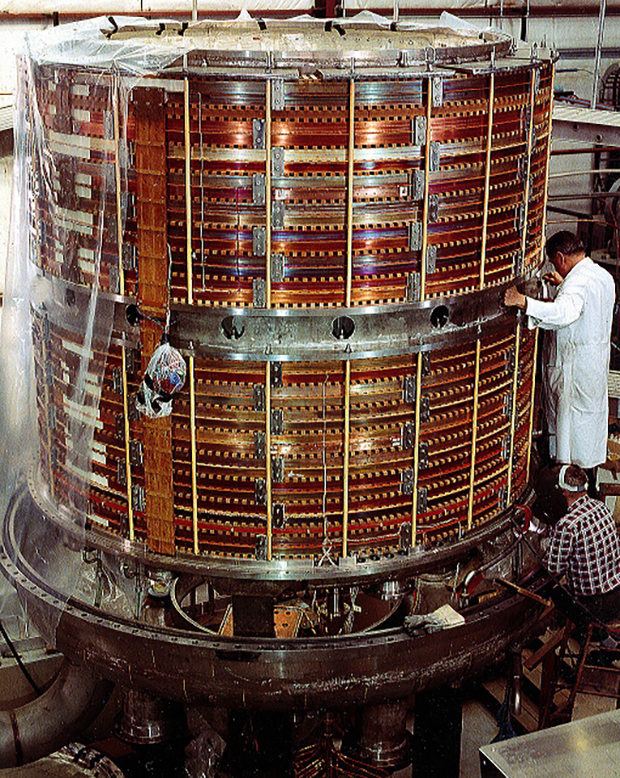
Photo: Brookhaven National Lab
Bubble Chamber Magnet. Shown here is Brookhaven National Laboratory's 7-foot Bubble Chamber under construction in 1968. Particles from the Alternating Gradient Synchrotron (AGS) passed through liquid hydrogen which was chilled to minus 415 degrees Fahrenheit. As particles passed through the liquid, the volume of the chamber was rapidly expanded by a large hydraulic piston. This expansion caused bubbles to form along the tracks of passing particles. Cameras atop the chamber captured the short-lived bubble tracks for analysis. This was the first particle detector of its type in which the chamber through which the particles passed was surrounded by a superconducting magnet. This detector was used to discover the charmed baryon, a particle composed of three quarks, one of which was the "charmed" quark. This result helped physicists confirm a new member of the quark family.

Photo: Brookhaven National Lab
Cockroft-Walton Accelerator. The Alternating Gradient Synchrotron's Cockroft-Walton generator. No longer in use, this is the device that was used to provide the initial acceleration to protons prior to injection into a linear accelerator and then on to the AGS.
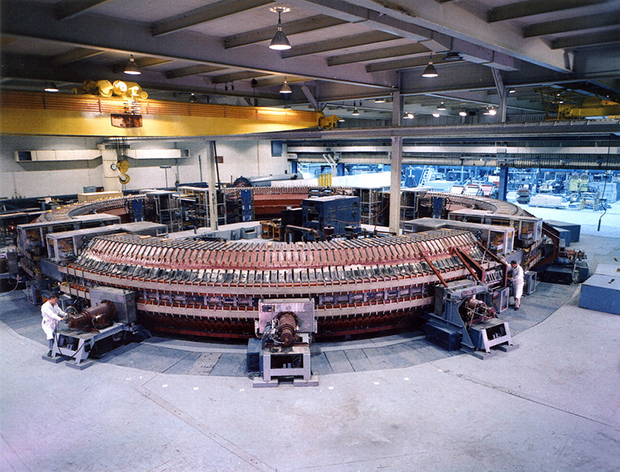
Photo: Brookhaven National Lab
Cosmotron. Brookhaven National Laboraory's Cosmotron was the first accelerator in the world to send particles to energies in the billion electron volt, or GeV, region. The Cosmotron reached its full design energy of 3.3 GeV in 1953. The machine was in use until 1968.
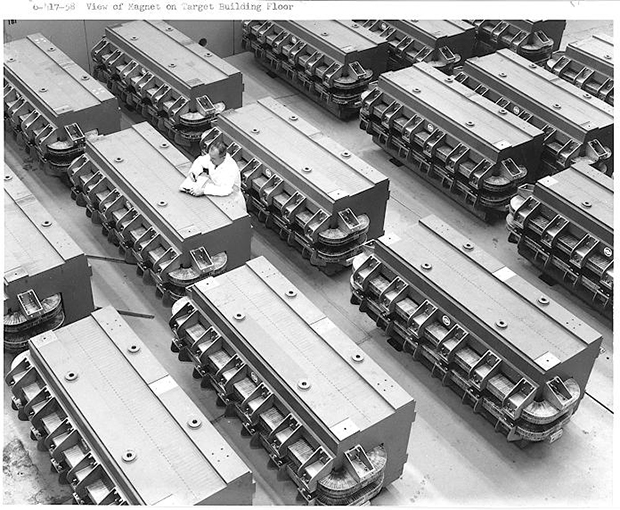
Photo: Brookhaven National Lab
Magnets for Brookhaven's Alternating Gradient Synchrotron (AGS) awaiting installation into the accelerator ring tunnel in 1958.
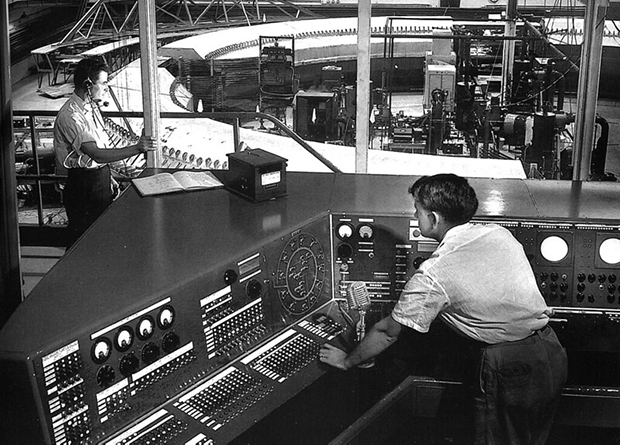
Photo: Brookhaven National Lab
Cosmotron Control Room. The Cosmotron was the first machine to produce all the types of negative and positive mesons known to exist in cosmic rays, making possible the discoveries of the K0L meson and the first vector meson. It was also the first accelerator to produce heavy unstable particles and this led directly to the experimental confirmation of the theory of associated production of strange particles. The Cosmotron operated from 1953 to 1966.
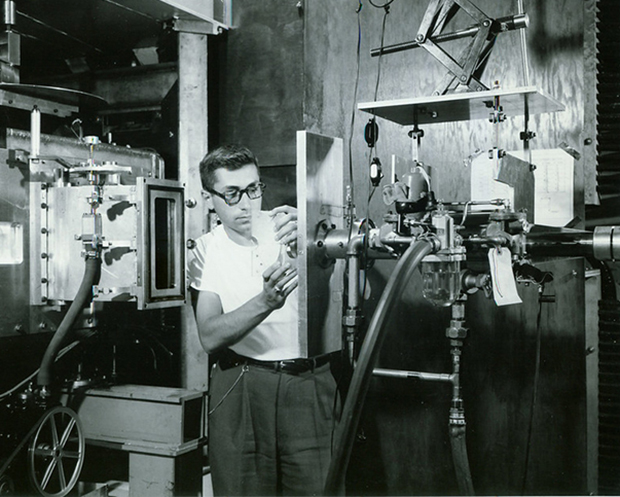
Photo: Brookhaven National Lab
Experiment at the Cosmotron. 1954 - A Brookhaven Lab physicist readies a piece of plastic which will be bombarded by billion-volt protons in the Cosmotron at Brookhaven National Laboratory. When the rectangular slab is moved tightly against the rectangular groove, air is pumped out of the small chamber. An operator in the control room (not shown) can then set up automatic equipment which, after the Cosmotron is started up, will push the target into the path of the protons as they circulate in the vacuum chamber (left). Fragments of the nuclei target atoms are trapped in research equipment for studies of the structure and properties of the atomic nucleus. The Cosmotron ceased to operate December 31, 1966.
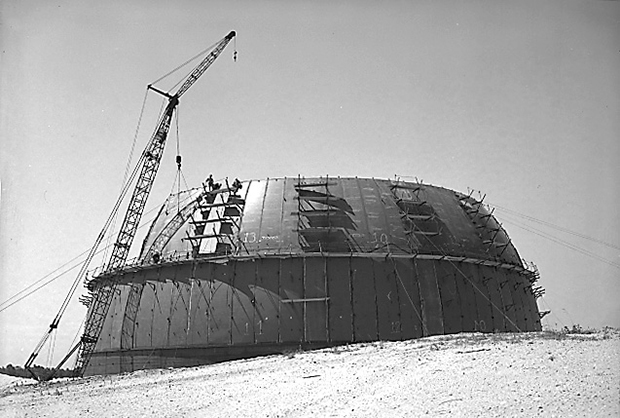
Photo: Brookhaven National Lab
High Flux Beam Reactor (HFBR) containment vessel under construction, June 1962. The mission of the HFBR was to provide a source of neutrons for multidisciplinary scientific research in materials science, chemistry, biology, and physics. The HFBR achieved criticality on October 31, 1965. It was permanently closed in 1999.
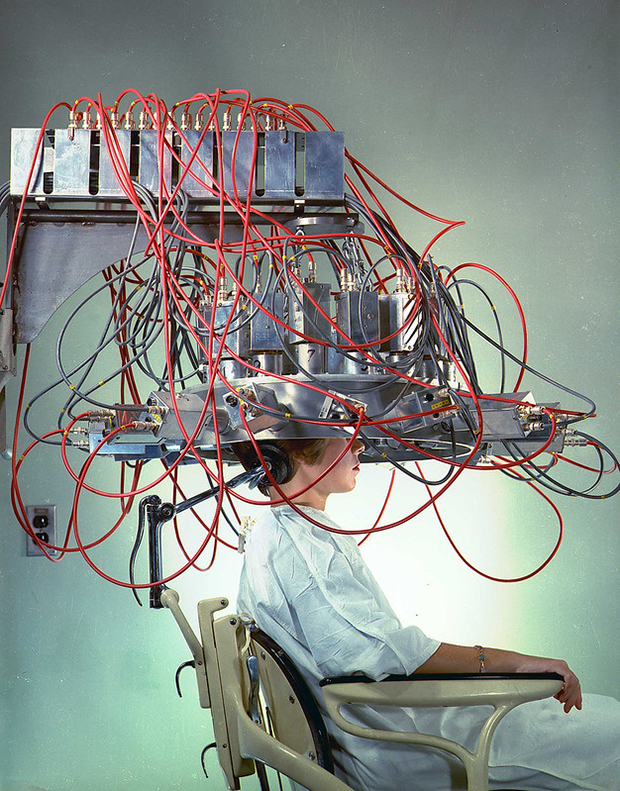
Photo: Brookhaven National Lab
Pre-PET Headgear (Positron Emission Tomography). In 1961, chemists at Brookhaven National Laboratory studied how to detect small brain tumors by analyzing the decay of radioactive material injected into the patient's bloodstream and preferentially absorbed by the tumor. To help them, BNL's Instrumentation Division built different arrays of detectors, and this circular type proved best. In the 1970's, BNL helped reconstruct the raw data received by the detectors into an image of the working brain. This breakthrough led to more practical devices for imaging areas of the brain: today's PET machines. BNL scientists have used PET technology to study major areas of medical research including drug and alcohol addiction, obesity and eating disorders, attention deficit hyperactivity disorder (ADHD), aging, and neurodegenerative disorders.
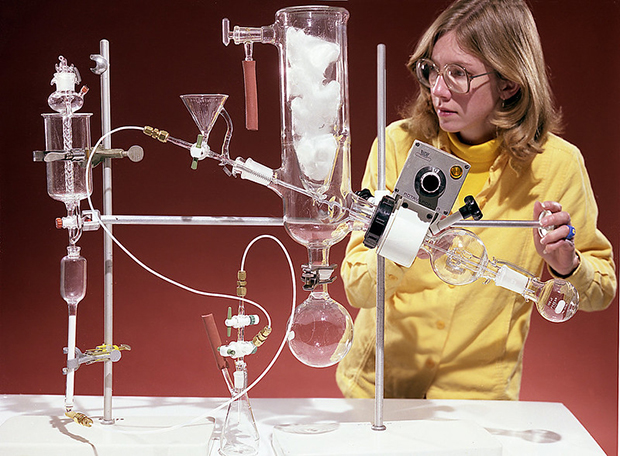
Photo: Brookhaven National Lab
Brookhaven's Joanna Fowler is shown here with an early 18FDG synthesis apparatus in 1979. Chemists at Brookhaven National Laboratory have been world leaders in the synthesis of short-lived radioisotopes for nuclear medicine, under sustained support from the U.S. Department of Energy's Office of Science. 18FDG is now the standard radiotracer used for positron emission tomography (PET) neuroimaging and cancer diagnosis, with more than 1.5 million 18FDG PET scans performed annually.










